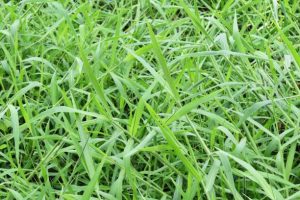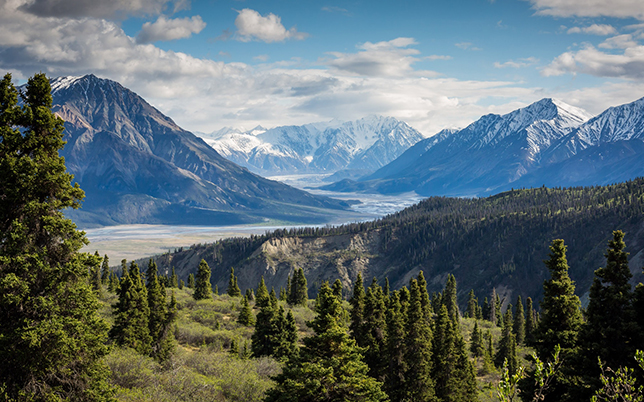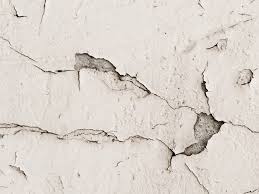Are you thinking of taking your first move in goat farming?
And concerned about grass that will be best for your goat?
Don’t worry you will find an overall idea today.
In this article, I am going to share some popular goat grasses that are full of necessary nutrients like Protein, Fiber, Vitamins, Minerals, etc.
These nutrients will help to keep the goat healthy and speed up growth.
Are you excited to learn about grass?
Ok… great.
But let’s have a quick look at…
Eating Behavior Of Goat
So you are thinking if goats have eating preferences or not?
The answer is yes.
They have special preferences for certain types of grasses based on a few factors such as palatability, nutritional content, and digestibility.
You know what: Goats use their keen sense of smell and taste to identify and choose the most palatable and nutritious vegetation available to them.
Not only that, goats like a variety of plant species and parts that contribute to their overall eating diversity.
For example: Goats prefer tender and leafy grasses, especially those with a high leaf-to-stem ratio.
Similarly, they don’t eat hard parts of grass.
So before choosing grass for your goat, make sure grass has good nutritional content as well as easy to digest.
However: we will see some best grasses that have all the necessary nutrition and goats love to eat.
Let’s see some best goat grasses.
1. Para Grass

Para grass is one of the best grasses for goats. It can grow up to 5 m in one season.
And the best thing: Para grass is leafy. And blades are hairy, linear, grow up to 30 cm long, and 16-20 mm wide.
So as I mentioned earlier, goats like leafly grass very much. So no doubt Para grass is a goat’s favorite.
Most importantly, Para grass has all the necessary nutrients like protein, fiber, and minerals (Calcium, Sodium, Zinc, Iron, etc). So no doubt it is healthy for goats.
Nutrition
We will know the details nutrition of para grass.
Protein
Para grass has a high protein content, especially during the vegetative growth stage. As we all know, protein is essential for muscle development, milk production, and overall growth.
Fiber
Para grass has 5% to 12% crude protein and some fiber in its mature phases. But it is often less fibrous than certain other types of fodder.
However, goats require fiber to keep their digestive systems healthy and to enable healthy rumen activity.
So you can use this para grass as a protein and minerals source. But you have to add other things to ensure a balanced diet with fiber.
Vitamins
Para grass also has a good content of essential vitamins and minerals. It contributes to improving the overall health, immunity, and overall well-being of goats.
Para grass has vitamins
- Vitamin A.
- Vitamin D.
- Vitamin E.
Minerals
Minerals are crucial for preventing nutritional deficiencies and supporting the optimal growth and reproduction of goats.
It has minerals like…
- Calcium.
- Phosphorus.
- Potassium.
Energy
This grass is also a good source of energy. It will fulfill your goat’s metabolic needs and support various physiological functions.
Climates
Mainly warm temperatures and ample rainfall climate are ideal growing conditions for Paragrass.
For example: average annual temperatures above 20°C (68°F) are good enough.
So during the spring and summer seasons, Para grass grows quickly.
But the most impressive thing is, this grass can tolerate waterlogged and poorly drained soils. And it can survive in water for a long time.
2. Smart Napier Grass
Smart Napier is another popular grass among farmers. This Grass is specially engineered to have increased nutritional content.
And obviously, now Smart Napier has more nutritional value compared to other traditional Napier Grass varieties.
It has high levels of protein, vitamins, and minerals.
However: Smart Napier is not very tall grass. This grass grows up to 4 to 5 feet in height. But it has a lot of shots and green leaves from the ground to the top.
So there is no doubt that this grass production is a good decision.
And Note, smart Napier grass is leafy and very supple and soft. So because of its softness, goats can easily eat top to bottom. So no waste here.
Good part is that once you plant smart Napier properly, it will be available for 5 to 6 years.
Nutrition
Red Napier is rich in nutrition content.
Protein
Smart Napier has around 18 to 20% protein. Which will contribute to enhancing overall health benefits.
Fiber content
Crude fiber 26.5 to 33.6 percent. Fiber will ensure easy digestion.
Energy
crude fat 2.4 to 4.5% which serves essential energy source to support metabolic processes, growth, reproduction, lactation, and physical activities. Not only that it will help to improve milk production also.
Vitamins and minerals
Smart Napier is also full of vitamins and minerals. So you don’t need to be concerned about essential food elements.
Here are some examples…
Vitamin
- Vitamin A: Improves vision, Immunity, and healthy reproduction.
- Vitamin K: Improve teeth and bone quality.
- Vitamin B (B1, B2, B3, B5, B6): Balance metabolism systems, improve nervous function, and increase healthy red blood cell production.
Minerals
Napier grass also contains various minerals.
These minerals include:
Calcium, Phosphorus, Potassium, Magnesium, Iron, and Zinc.
Climate
Warm weather is best for smart Napier grass. Around 20°C (68°F) to 35°C is suitable for growing smart Napier grass.
Now pay attention: keep in mind this grass can not tolerate extreme cold temperatures.
You have to ensure your weather before harvesting this grass.
3. Alfalfa Grass
Alfalfa is the most popular nutrition source, especially protein.
Most farmers use this grass as a protein source.
and many specialists recommend this grass to fulfill the necessary nutrients for goats.
But Note, it’s important: you have to serve alfalfa grass in moderation content. Because sometimes too much content of protein can disturb a goat’s digestive system.
The best way is to make a balance with other grass.
Height: Alfalfa grass can grow up to 20 inches. But it depends on land, weather, and proper take care.
Nutrition
Again see the nutrition details below.
Protein:
Crude protein content of 24.4% on a dry matter basis (% DM).
Fiber:
High crude fiber content of 20.6% on a dry matter basis (% DM).
However: It is relatively high in fiber, which could affect the goat’s digestibility and palatability.
So moderated alfalfa grass will be best for the goat diet.
Vitamins
- Folate
- Vitamin B1
- Vitamin B2
- Vitamin C
- Vitamin K
Minerals
- Copper
- Iron
- Magnesium
- Manganese
Climate
Alfalfa grass grows best in moderate temperatures from 15°C to 25°C (59°F to 77°F) during the growing season. It is a cool-season grass that prefers mild winters and warm summers.
But this grass can’t tolerate extreme stress like a cold and too much moisture. So extreme weather can affect to reach its high potential.
4 Signal Grass
Signal grass is native to Africa but nowadays Signal grass getting popular among farmers all over the world.
It spreads horizontally with forms thick mats.
This grass can reach heights of up to 1 meter (3.3 feet).
The leaves are flat, narrow, and usually have a bluish-green color.
Nutrition
Signal grass is rich in all kinds of nutrition. It is very suitable for animals like cattle, sheep, and goats. The grass has good digestibility and contains moderate levels of protein and energy.
Protein
Signal grass has 8 to 12% crude protein on a dry matter basis.
However, Protein percentage depends on the growing stage of grass.
For example: protein percentage tends to be higher in younger, and actively growing plants. And less in mature plants.
Fiber
Like many other grasses, Signal has fiber, which is important for goats. It has both neutral detergent fiber (NDF) and acid detergent fiber (ADF). It has around 25-30% fiber.
Energy
Signal Grass generally provides around 0.70 to 0.75 Mcal/lb (megacalories per pound) or approximately 1.54 to 1.65 Mcal/kg (megacalories per kilogram) of dry matter.
However, it can vary depending on factors such as the maturity of the plant and environmental conditions.
Mineral
Signal grass contains various minerals that are essential for animal health and productivity.
Here are some minerals: zinc, copper, and selenium.
Vitamins
Some necessary vitamin that helps to improve goat’s health.
Here are some: vitamin A, vitamin E, and certain B vitamins, Vitamin B9, Vitamin c, Vitamin D.
Climate
Signal grass grows better in temperatures from 20°C to 35°C (68°F to 95°F).
It can grow in a variety of soil types, including sandy loams, clay soils, and lateritic soils.
But, it performs best in well-drained soils with good fertility.
5 Red napier
Red Napier grass African origin but is now becoming popular all over the world. Its productive ability in diverse conditions makes it different from other grass.
Red Napier grass is a tall grass species. It can reach heights of up to 3-4 meters (10-13 feet) under favorable growing conditions.
It has thick, succulent stems with purple or reddish-colored nodes, giving it its distinctive appearance. The leaves are broad, elongated, and dark green.
This grass is suitable for cattle, sheep, goats, and buffaloes.
However, it has a rich nutritional content like other grass.
Nutrition
Let’s see some nutritional value below.
Protein
Red Napier grass has moderate to high levels of crude protein. It has protein content from 8% to 15% on a dry matter basis.
Fiber
Red Napier grass typically contains around 20% to 25% fiber on a dry matter basis.
Energy
This grass has an energy of approximately 1.43 to 1.65 Mcal/kg (megacalories per kilogram) of dry matter.
Mineral
Red Napier gras includes calcium, phosphorus, potassium, magnesium, and trace minerals such as zinc, copper, and selenium.
Vitamin
Most essential vitamins, including vitamin A, vitamin E, and certain B vitamins.
Climate
Red Napier grass prefers warm weather. It grows better in temperatures from 20°C to 35°C (68°F to 95°F).
But this grass is sensitive to frost and does not tolerate cold temperatures.
It is best suited to areas where frost is rare or absent.
Most importantly, this grass prefers well-drained soils to avoid waterlogging. You have to ensure good soil drainage for healthy root development and overall plant growth.
6 Pearl millet
Pearl millet is believed to have originated in Africa, Asia, and parts of the Americas.
It is a tall, coarse grass grown grass that can be grained and foraged production.
Para grass can reach heights of 2-4 meters (6.5-13 feet).
Nutrition
No doubt pearl millet has good contents of nutrition.
Protein
Protein in millet grass has 8% to 14% on a dry matter basis.
Fiber
Millet grasses have around 8% to 15% fiber on a dry matter.
Mineral
Here are some necessary minerals…
- Zinc.
- Copper.
- Selenium.
These minerals play crucial roles in bone development and muscle function.
Vitamin
- Vitamin A.
- Vitamin E.
- B vitamins.
Climate
Warm temperature is best for optimal growth of pearl millet. It grows best in regions with temperatures between from 25°C to 35°C (77°F to 95°F).
Pearl millet prefers well-drained soils to prevent waterlogging.
Also, sandy loam and loamy soils with good drainage are ideal for pearl millet cultivation.
7 Mombasa Guinea
Mombasa Guinea grass is a tall species that can reach heights of up to 2-3 meters (6-10 feet) under favorable growing conditions.
Nutrition
Let’s see the nutritional content of Mombasa grass.
Protein
Mombasa Guinea grass has 8% to 15% protein.
Fiber
Mombasa Guinea grass generally provides a good source of digestible fiber.
Mineral
Calcium, phosphorus, potassium, magnesium, zinc, copper, and selenium.
Vitamin
- Vitamin A.
- Vitamin E.
- Vitamin B.
- Vitamin B12.
- B9 biotin.
Climate
It grows best in temperatures ranging from 20°C to 35°C (68°F to 95°F).
Mombasa Guinea grass can grow in a variety of soil types, including sandy loam, clay loam, and lateritic soils.


